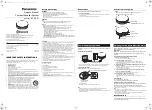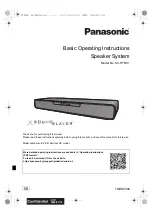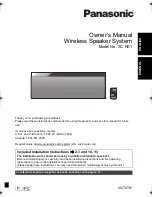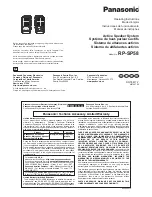
TECHNICAL DATA
RECEIVER
• Power supply: 230 V AC/ 50Hz
• Current draw (while ringing): 60 mA
• Quiescent current: 4 mA
• Operating frequency: 433 MHz
• Bell sound: 25 melodies to select
• Optical ringing indication
• Sound level: approx. 85 dB
• Protection class: II
• Protection grade: IP 20
• Temperature operating range: 0° ÷ 35°C
• Dimensions [mm]: 68x86x71
TRANSMITTER
• Does not require any kind of supply
• Operating range: 100 m*
• Transmission: radio
• Maximum transmit power: ERP<20 m
• Operating frequency: 433 MHz
• Coding: million codes
• Protection class: III
• Water-resistant
• Temperature operating range: -20° ÷ +35°C
• Dimensions [mm]: 46x88x31
MOUNTING MANUAL
1. General description
The bell may be used as a doorbell, an internal calling device or a personal alarm device. The doorbell installation
is not needed. The bell is 230 V AC operated (connected directly to 230 V AC socket), whereas the bell button does
not require any installation, which eliminates the necessity to perform problematic battery change Lack of battery in
the transmitter also ensures its water resistance and proper functioning in low temperatures, which in case of battery-
operated transmitters lead to their quick failure 433 MHz frequency is used for signal transmitting and receiving. Range
in the open space reaches about 100 m The user has 25 melodies to select from The device is equipped with optical
calling signaling, which is useful for example for hard of hearing people It is possible to program additional buttons
(not more than 3) for one bell
2. Remote control registration
In order to register a transmitter to the bell, it is essential to press the button (1) located at the front of the bell’s casing
and hold it for about 5 seconds, until the diode turns off. Then press the button of the transmitter (2) twice. In order
to register another button to the same bell, it is essential to repeat the whole procedure. Only 3 transmitters can be
programmed for one bell.
3. Melody selection
Selection of melodies and tones can be entered by pressing the button (1) located at the front of the bell. The following
melody appears after pressing the button.
* The operating range given above, concerns the open area under ideal conditions, with no obstacles. If there are obstacles between
the receiver and the transmitter, one should expect a decrease in the operating range for, respectively: wood and plaster by 5
to 20%, brick by 20 to 40%, reinforced concrete by 40 to 80%. It is not recommended to use the radio systems in case of metal
obstacles, due to a significant limitation of the operating range. Also aerial and underground power engineering lines of a large
power capacity and GSM transmitters in close proximity of these devices have a negative impact on their operating range.
WIRELESS AND BATTERYLESS BELL SAMBA ST-950




































